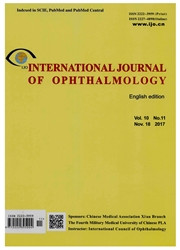

 中文摘要:
中文摘要:
为了检测在眼泪的腺表明小径(BCRSP ) 的 B 房间受体的表示,良性的 lymphoepithelial 损害(LGBLEL ).METHODSGene microarray 被用来从轨道的多孔的 hemangioma (控制纸巾) 从 LGBLEL 病人在眼泪的腺纸巾把整个染色体的表示比作纸巾。BCRSP 的表示被聚合酶链反应(PCR ) 和在 LGBLEL 病人显著地增加的 BCRSP 的 22 基因的 immunohistochemistry.RESULTSThe 表示证实。PCR 分析证明 CD22, CR2,和 BTK 都高度在 LGBLEL 纸巾被表示。Immunohistochemical 分析证明那 CR2 蛋白质在 LGBLEL 是在场的,但是 CD22 和 BTK 蛋白质是否定的。CR2, CD22,和 BTK 没与任何一个 PCR 在轨道的多孔的 hemangiomas 被观察或 immunohistochemistry.CONCLUSIONBCRSP 可能涉及 LGBLEL 的致病。
 英文摘要:
英文摘要:
AIM:To detect the expression of B cell receptor signaling pathway(BCRSP) in lacrimal gland benign lymphoepithelial lesions(LGBLEL).METHODS:Gene microarray was used to compare whole-genome expression in lacrimal gland tissues from LGBLEL patients to tissues from orbital cavernous hemangioma(control tissues). Expression of BCRSP was confirmed by polymerase chain reaction(PCR) and immunohistochemistry. RESULTS:The expression of 22 genes of the BCRSP increased significantly in LGBLEL patients. PCR analysis showed that CD22, CR2, and BTK were all highly expressed in LGBLEL tissues. Immunohistochemical analysis showed that CR2 protein was present in LGBLEL, but CD22 and BTK proteins were negative. CR2, CD22, and BTK were not observed in the orbital cavernous hemangiomas with either PCR or immunohistochemistry. CONCLUSION:BCRSP might be involved in the pathogenesis of LGBLEL.
 同期刊论文项目
同期刊论文项目
 同项目期刊论文
同项目期刊论文
 期刊信息
期刊信息
